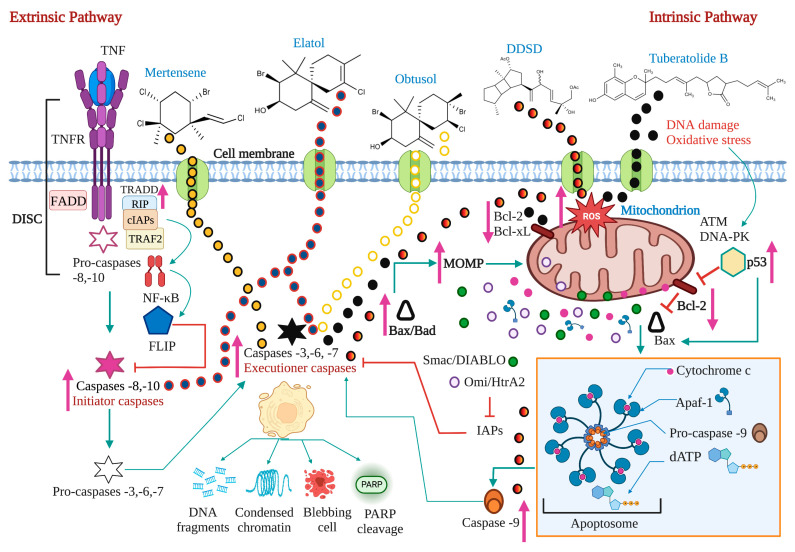Figure 14.
Possible mechanism of action of terpenes extracted from macroalgae inducing apoptosis. It represents the mechanism of action of some compounds such as DDSD, Tuberatolide B, elatol, obtusol, and mertensene in the extrinsic and intrinsic apoptosis pathway, modulating target molecules involved in them. DDSD and Tuberatolide B generate an overproduction of ROS intracellular, which causes mitochondrial dysfunction allowing the release of pro-apoptotic compounds to the cytosol, triggering apoptosis. Pink arrows indicate positive or negative regulation of crucial proteins by such terpenes. Apaf-1: apoptotic protease activating factor-1; ATM: Ataxia-telangiectasia-mutated; Bax: Bcl-2-associated X protein; Bcl-2: B-cell lymphoma; Bcl-xL: B-cell lymphoma-extra-large; Bid: BH3- interacting domain death agonist; Caspase -3, -6, -7, -8, -9, -10: Cysteinyl aspartic acid-protease -3, -6, -7, -8, -9, -10; DNA-PK: DNA-dependent protein kinase; DR 4/5: Death receptor 4/5; FADD: Fas-associated death domain; FLIP: (FADD-like IL-1β-converting enzyme)-inhibitory protein; HtrA2: High-temperature requirement protein A2; IAP: Inhibitors of Apoptosis Proteins; MOMP: Mitochondrial Outer Membrane Permeabilization; NF-κB: nuclear factor kappa-light-chain-enhancer of activated B cells; PARP: poly (ADP-ribose) polymerase; RIP: Receptor interacting protein; SMAC/DIABLO: Second mitochondrial activator of caspases/direct IAP binding protein with low PI; tBid: Truncated Bid.

